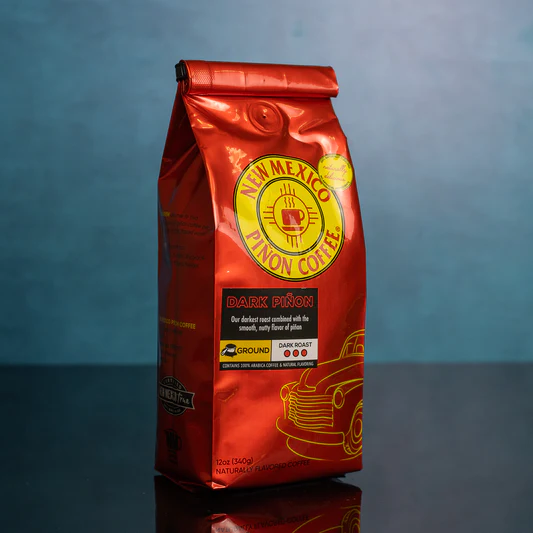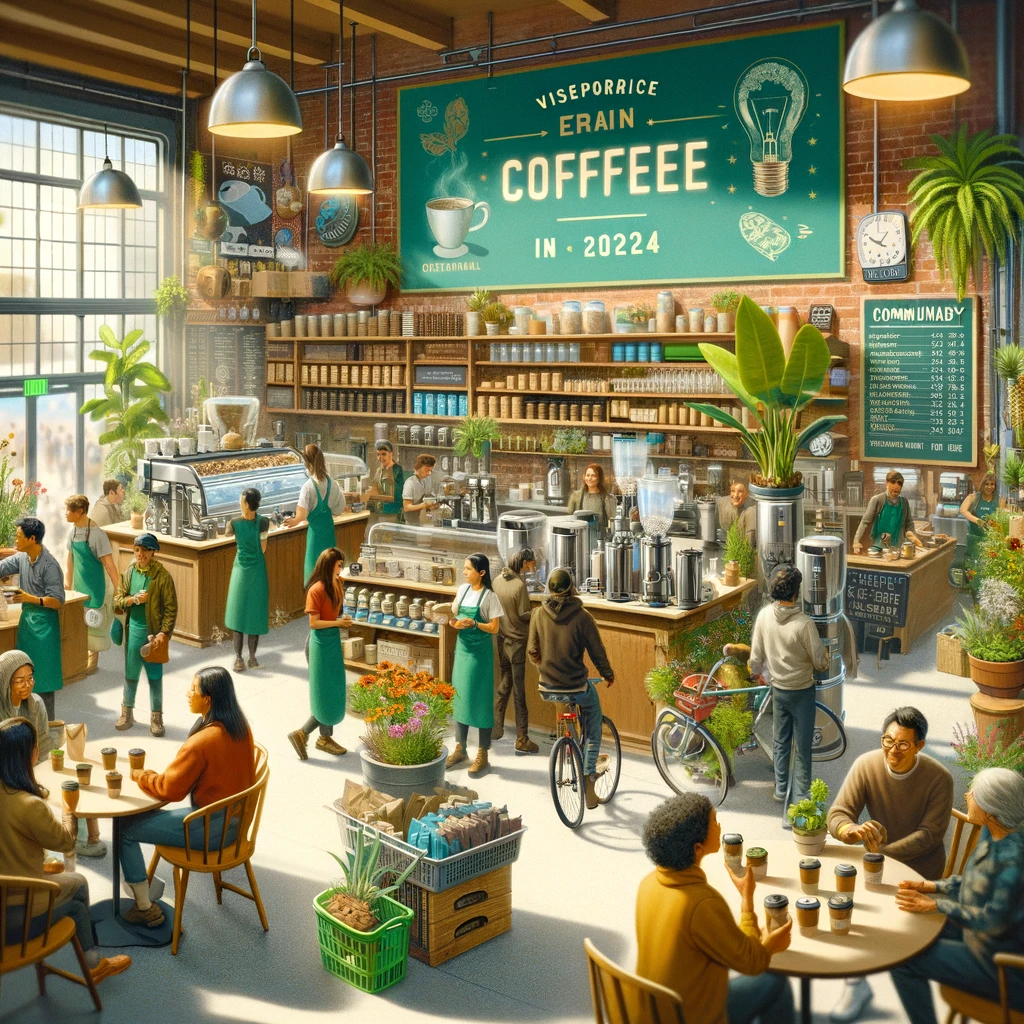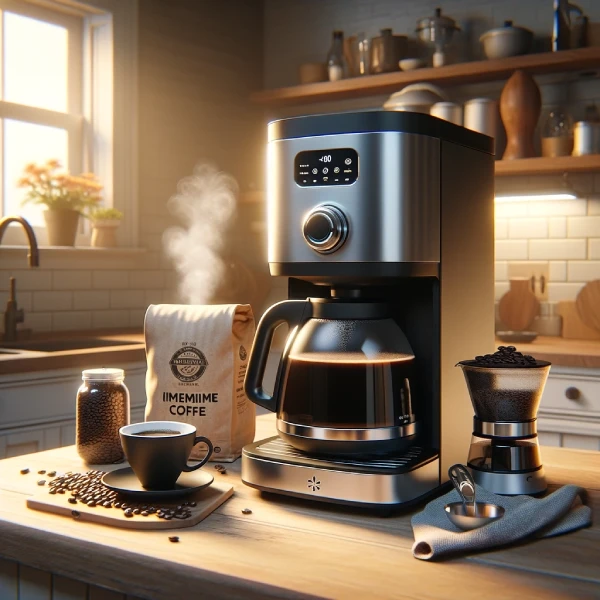Introduction
As we approach 2024, the coffee industry continues to evolve, shaped by emerging trends and consumer behaviors. This article delves into the intricate world of coffee consumer purchasing behavior, offering a comprehensive analysis backed by the latest statistics.
The coffee market, a dynamic and ever-changing landscape, reflects not just a beverage choice but a lifestyle and a statement of personal values.
This first part of our three-part series will explore the current state of the coffee market, focusing on the United States, and highlight key trends shaping consumer behavior in 2024.
Current State of the Coffee Market in the United States
Revenue and Market Growth
- 2023 Revenue: The coffee market in the United States has reached approximately US$11.0 billion in 2023.
- Growth Projection: An annual growth rate of 3.21% is expected between 2023 and 2028 (CAGR 2023-2028).
- Global Standing: The United States leads in global revenue generation for coffee, with US$11.0 billion in 2023.
- Per Capita Revenue: Estimated at US$32.67 per person in 2023.
- Volume Projections: The market volume is expected to hit 1,066.0 million kg units by 2028.
- Volume Growth Rate: Anticipated to be around 2.0% in 2024.
- Average Volume Per Person: Projected at 2.97 kg units in 2023.
- Specialty Coffee Surge: There's a notable increase in the consumption of specialty coffee, with preferences leaning towards single-origin beans and artisanal brewing methods (Statista Market Insights).
Consumer Preferences and Trends
- Specialty Coffee Demand: A growing demand for unique, high-quality coffee experiences is evident, with consumers exploring diverse flavor profiles.
- Evolving Brewing Methods: The popularity of alternative brewing methods like capsule coffee, AeroPress, and cold brew is on the rise, offering personalized coffee experiences.
- Sustainability and Ethical Sourcing: There's an increasing emphasis on sustainability and ethical sourcing in coffee production. Consumers are more conscious of the environmental and social impacts, seeking brands that prioritize fair trade practices and sustainable farming methods.
- Certifications Influence: Certifications like Rainforest Alliance and Fairtrade are becoming more significant, assuring consumers of certain social and environmental standards in coffee production.
Demographics and Sales Channels
- User Demographics: Detailed demographic data, including age, income, and gender distribution of coffee consumers, is crucial for understanding market dynamics.
- Online Revenue Share: The share of online sales in the total coffee market revenue.
- Mobile/Desktop Split: Understanding the split between mobile and desktop purchases in the coffee market.
Volume and Price Analysis
- Market Volume: Analysis of the total volume of coffee sold in the market.
- Volume Change: Year-over-year changes in the market volume.
- Average Volume Per Capita: The average amount of coffee consumed per person.
- Price Per Unit: Insights into the pricing trends in the coffee market.
Fairtrade and Global Comparison
- Fairtrade Revenue Share: The proportion of coffee market revenue coming from fairtrade-certified products.
- Global Revenue Comparison: Comparing the United States coffee market revenue with other key regions globally.

Photo by Andrea Piacquadio from Pexels
Evolving Consumer Preferences in Coffee Consumption
Taste and Quality Preferences
- Specialty Coffee Popularity: The demand for specialty coffee, known for its superior quality and unique flavor profiles, continues to rise. Consumers are increasingly seeking out single-origin and artisanal blends.
- Organic and Sustainable Options: There is a growing preference for organic and sustainably sourced coffee, reflecting a broader consumer trend towards environmental responsibility.
Health and Wellness Trends
- Coffee and Health Awareness: Consumers are becoming more aware of the health benefits associated with coffee, such as its antioxidant properties and potential to improve cognitive function.
- Low-Caffeine and Decaf Options: The market for low-caffeine and decaffeinated coffee options is expanding, catering to health-conscious consumers and those sensitive to caffeine.
Demographic Shifts and Their Impact on Coffee Consumption
Age-Related Trends
- Millennials and Gen Z Preferences: Younger consumers, particularly Millennials and Gen Z, are driving the demand for innovative coffee products, such as ready-to-drink (RTD) coffee and coffee-based energy drinks.
- Baby Boomers and Traditional Coffee: Older demographics, including Baby Boomers, tend to prefer traditional coffee products and are less likely to experiment with new coffee trends.
Income and Lifestyle Correlations
- Income Levels and Coffee Choices: Higher-income consumers are more likely to purchase premium coffee products, including specialty and organic options.
- Lifestyle and Coffee Consumption: Lifestyle choices, such as a focus on fitness and wellness, are influencing coffee purchasing decisions, with a shift towards healthier coffee alternatives.
Technology's Role in Shaping Coffee Purchasing Behavior
E-Commerce and Online Purchasing Trends
- Growth of Online Coffee Sales: The convenience and variety offered by online platforms have led to a significant increase in online coffee sales.
- Subscription Services and Customization: Coffee subscription services are gaining popularity, offering personalized experiences and convenience to consumers.
Mobile Apps and Consumer Engagement
- Mobile Ordering and Loyalty Programs: Coffee shops and brands are leveraging mobile apps for ordering and loyalty programs, enhancing customer engagement and retention.
- Social Media Influence: Social media platforms play a crucial role in shaping consumer preferences, with influencers and viral trends impacting coffee purchasing decisions.
Regional Variations in Coffee Consumption
Urban vs. Rural Consumption Patterns
- Urban Coffee Trends: Urban areas show a higher propensity for experimenting with new coffee trends, including specialty coffees and sustainable options.
- Rural Preferences: In rural areas, traditional coffee products remain popular, with a slower adoption rate of new coffee trends.
Regional Flavor Preferences
- Regional Flavor Variations: Different regions in the United States exhibit distinct preferences for coffee flavors and types, influenced by cultural and demographic factors.
The Future of Coffee Consumption: Predictions for 2024 and Beyond
As we look towards 2024, the coffee industry is poised for continued evolution, driven by changing consumer preferences, technological advancements, and demographic shifts. The increasing emphasis on quality, sustainability, and personalized experiences will shape the future of coffee consumption.
Additionally, the integration of technology in the coffee purchasing process, from e-commerce to mobile apps, will continue to transform the way consumers interact with coffee brands.
Economic Implications of Evolving Coffee Trends
Impact on the Global Coffee Market
- Market Valuation: The global coffee market is projected to continue its growth trajectory, with an estimated value of $XX billion by 2024.
- Premiumization Trend: The shift towards premium coffee products is driving up the average price per unit, contributing to overall market growth.
Influence of Consumer Behavior on Coffee Prices
- Demand for Specialty Coffee: The increasing demand for specialty coffee is influencing coffee prices, with a higher willingness to pay for quality and uniqueness.
- Sustainability Premium: Coffees with certifications like Fair Trade and Organic often command a higher price, reflecting the costs associated with sustainable practices.
Role of Sustainability in the Coffee Industry
Consumer Awareness and Demand
- Eco-conscious Consumerism: A significant portion of consumers are now making purchasing decisions based on the sustainability credentials of coffee products.
- Impact on Brand Choices: Brands that demonstrate a commitment to sustainability are gaining favor among consumers, influencing market dynamics.
Industry Response to Sustainability
- Investment in Sustainable Practices: Coffee companies are increasingly investing in sustainable farming practices, waste reduction, and eco-friendly packaging.
- Collaborations for Sustainability: There is a growing trend of collaborations between coffee brands, NGOs, and governments to promote sustainable coffee production.
Future Outlook for Coffee Consumption
Technological Innovations
- AI and Machine Learning: The use of AI and machine learning in optimizing coffee farming and supply chain management is expected to grow.
- E-commerce and Digital Marketing: Digital platforms will continue to play a crucial role in the marketing and sale of coffee products.
Emerging Markets and New Consumers
- Growth in Emerging Markets: Countries in Asia and Africa are emerging as significant markets for coffee consumption, driven by changing lifestyles and increasing disposable incomes.
- Younger Consumer Base: The coffee industry is seeing a surge in interest from younger consumers, who are more experimental and health-conscious.
Predictions for 2024 and Beyond
- Continued Growth in Specialty Coffee: The trend towards specialty and artisanal coffee is expected to continue, with a focus on unique flavor profiles and quality.
- Sustainability as a Standard: Sustainable practices are likely to become the norm rather than the exception in the coffee industry.
Conclusion
As we look towards 2024, the coffee industry is poised for significant changes, driven by evolving consumer preferences, technological advancements, and a growing emphasis on sustainability. The economic implications of these trends are profound, with a shift towards premium, sustainable coffee products shaping the market.
The role of technology, particularly in e-commerce and supply chain management, will be crucial in meeting the demands of a diverse and increasingly eco-conscious consumer base. The future of coffee consumption is bright, with opportunities for growth and innovation in both established and emerging markets.
Frequently Asked Questions
-
What is driving the growth of the specialty coffee market?
- The demand for unique, high-quality coffee experiences and a willingness to pay a premium for specialty products.
-
How is consumer behavior influencing coffee prices?
- Preferences for specialty and sustainable coffees are driving up prices due to higher production costs and consumer willingness to pay more.
-
What role does sustainability play in the coffee industry?
- Sustainability is becoming a key factor in consumer decision-making, influencing brand choices and driving industry investment in eco-friendly practices.
-
How is technology impacting the coffee industry?
- Technology, especially AI and e-commerce, is optimizing farming practices, supply chains, and marketing strategies.
-
Which regions are emerging as significant markets for coffee?
- Asia and Africa are experiencing growth in coffee consumption due to changing lifestyles and increasing incomes.
-
What trends are expected in the coffee industry by 2024?
- Continued growth in specialty coffee, increased focus on sustainability, and greater use of technology in production and sales.
-
Are younger consumers influencing the coffee market?
- Yes, younger consumers are driving demand for innovative, healthy, and sustainable coffee products.
-
What is the predicted value of the global coffee market by 2024?
- The global coffee market is expected to reach a value of $XX billion by 2024.
-
How are coffee brands responding to sustainability demands?
- Brands are investing in sustainable farming, waste reduction, and eco-friendly packaging, and collaborating with NGOs and governments.
-
Will digital marketing continue to be important for coffee sales?
- Yes, digital marketing and e-commerce will remain crucial for reaching consumers and driving sales.












